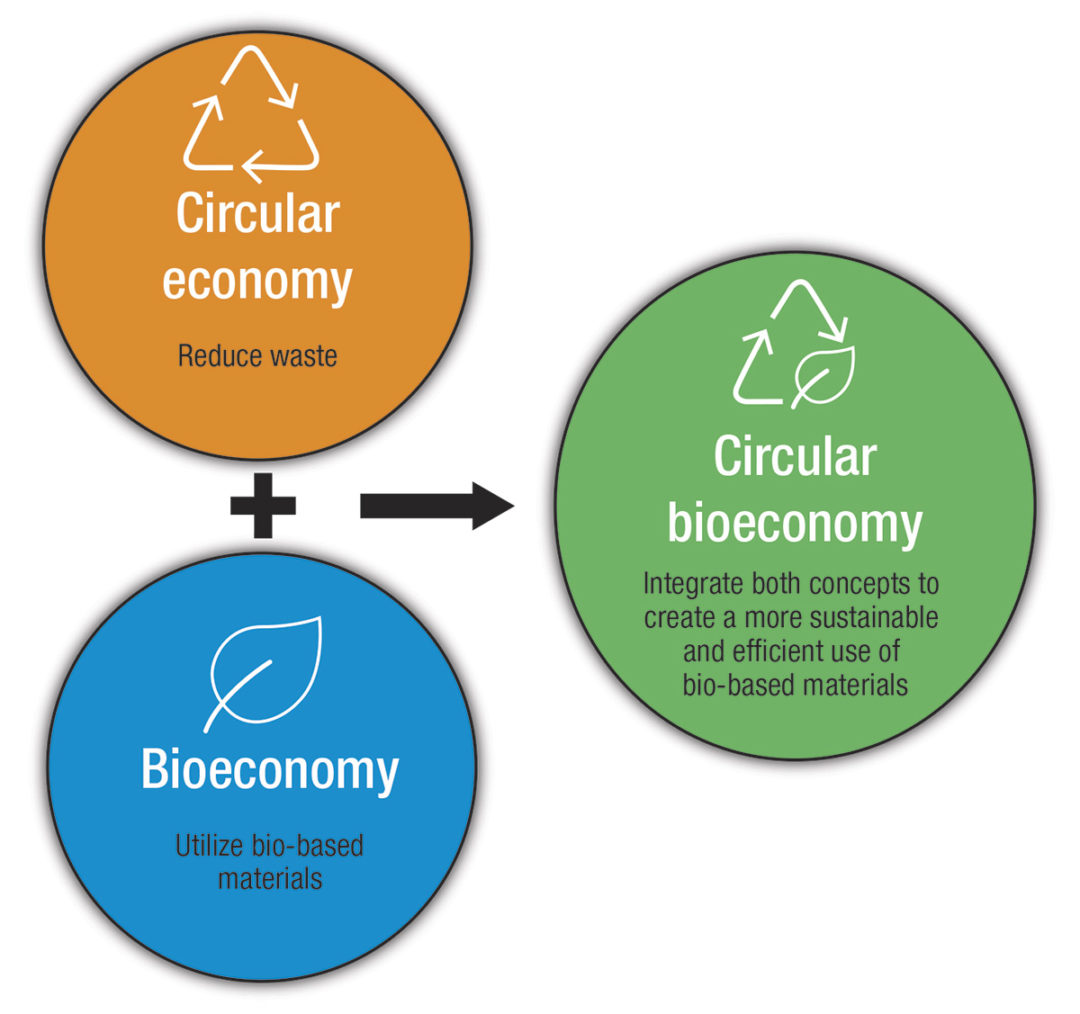As with many other animal-related activities, dairy farming is under growing scrutiny to increase the adoption of sustainable practices and to adjust their practices accordingly to modern concepts, such as the “circular bioeconomy.”
The circular bioeconomy, an emerging, innovative and holistic approach, provides an alternative solution to address the global challenges faced by dairy production. Challenges, such as climate change, resource depletion and a growing population, demand sustainable solutions to ensure the continued growth of the dairy sector.
It has been less than a decade since the concept of the circular bioeconomy started to be used. It often gets misconstrued and confused with other concepts, particularly the circular economy and bioeconomy. But what is the difference between circular economy, bioeconomy and circular bioeconomy? All three concepts share similarities in their focus on sustainable economic development and the use of renewable resources:
- Circular economy emphasizes the transition from a linear production system (a take-make-use-dispose approach) to a loop built on the foundation of the reduce, reuse, recycle and recover (4R) framework.
- Bioeconomy is an emerging field that focuses on utilizing bio-based materials to enhance sustainability.
- Circular bioeconomy combines the principles of circular economy and bioeconomy, aiming to effectively utilize bio-based materials by using waste and side streams of industrial processes and promoting the reuse, recycling and cascading of these materials. It emphasizes the need for coordination, collaboration and systemic thinking among stakeholders to create a more sustainable and circular agribusiness environment.
In essence, while circular economy and bioeconomy stand as individual concepts, circular bioeconomy integrates elements from both, emphasizing closed-loop systems and the use of bio-based materials, as illustrated in the graphic at the top of this article. This article delves into the novel concept of circular bioeconomy and its application to dairy production.

Mario de Haro-Marti holds biochar that will be added to his compost reactors. Photo by Savanah Nunes.
Sustainable practices in feed production and manure management
Dairy is Idaho’s largest agricultural sector, and as in other ag industries, it faces several challenges. One major concern is the environmental impact associated with dairy farming, including greenhouse gas emissions, nutrient runoff and waste disposal issues. Another concern is the high demand for animal feed, which constitutes a great part of production costs.
Applying circular bioeconomy principles to dairy production encourages the adoption of sustainable and regenerative agricultural practices for feed production. This includes encouraging the use of cover crops to enhance soil health by increasing soil organic matter, reducing reliance on synthetic fertilizers (yet improving soil fertility, due to the capture of excess nutrients after a crop is harvested), and minimizing the carbon footprint associated with feed cultivation. In addition to the benefits to soil health, using cover crops can help fulfill the high demand for forages for animal feed.
A recent study indicated that the incorporation of small grains, commonly used as cover crops, in the diets of lactating and dry cows in dairy operations in Idaho has significantly increased in the last two decades. By integrating the use of cover crops, dairy farmers can create a closed-loop system where the byproducts of one process become valuable inputs for another, promoting resource efficiency.
Circular bioeconomy emphasizes efficient nutrient cycling, and in the context of dairy production, this relates to manure management. Instead of considering manure as waste, this approach promotes its transformation into a valuable resource. The USDA Sustainable Ag Systems project, known as the Idaho Sustainable Agriculture Initiative for Dairies (ISAID), aims to explore diverse practices for enhancing the use of dairy manure. This project demonstrates that manure can be used raw, composted or as hydrochar to improve soil fertility and reduce the need for synthetic fertilizers.
Additionally, advanced technologies indicate that manure can be used to produce bioplastic that can be a component for producing diverse goods directly or indirectly, which, at the end of the day, can potentially increase revenue for dairy operations. Even though it is not within the objectives of the ISAID project, anaerobic digestion can be employed to generate biogas from manure, providing a renewable energy source for on-farm operations.

On the Idaho CAFE Demonstration Farm, a pivot spans a field where future ISAID research will be tested. Photo by Savanah Nunes.
Integration of production stages
Moreover, circular bioeconomy can also promote the development of closed-loop systems through the integration of various stages of production, processing and distribution to create a continuous cycle where waste from one stage becomes a resource for another. For instance, byproducts from milk processing, such as whey, are used in the diet, reducing overall waste and enhancing the economic viability of the entire supply chain.
It also applies to the use of other byproducts in the diets, creating an economically and environmentally optimized system. Among the byproducts most used in the diets of cows in Idaho are meals derived after oil extraction from oilseeds, coproducts of the distillery industries after biofuel production, hulls and shells after food processing, and whey, among others.
Furthermore, the principles of circular bioeconomy can be extended to the management of dairy cows. Precision farming technologies can be employed to monitor and optimize feed efficiency, minimizing resource inputs and environmental impacts.
All in all, by embracing the circular bioeconomy principles, dairy farmers can:
- Promote sustainable feed production, efficient manure management and closed-loop systems, which collectively lead to lower greenhouse gas emissions, decreased reliance on synthetic inputs and a reduced impact on ecosystems.
- Enhance their economic resilience. The integration of sustainable practices and the creation of circular supply chains can lead to cost savings, increased resource efficiency of use, and the development of new revenue through the utilization of byproducts or by generating new products from the manure, for example.
- Improve social responsibility by promoting sustainable practices within the dairy industry, as the dairy products produced through circular bioeconomy principles can meet the growing demand for responsibly produced goods.
The examples in this article highlight the existing implementation of the circular bioeconomy in the dairy sector, emphasizing that this novel concept is already being applied at certain levels. Despite its recent emergence, the dairy industry has adopted practices aligned with circular bioeconomy principles. Land-grant universities, such as the University of Idaho, are actively involved in ongoing efforts to pioneer innovative approaches to further enhance the sustainability of the dairy sector. The dairy industry, recognizing its responsibility, continues to explore and implement strategies to advance sustainability practices.







